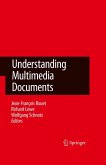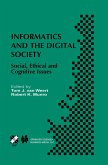The first section of Semantic Web and Education surveys the basic aspects and features of the Semantic Web. After this basic review, the book turns its focus to its primary topic of how Semantic Web developments can be used to build attractive and more successful education applications.
The book analytically discusses the technical areas of architecture, metadata, learning objects, software engineering trends, and more. Integrated with these technical topics are the examinations of learning-oriented topics such as learner modeling, collaborative learning, learning management, learning communities, ontological engineering of web-based learning, and related topics. The result is a thorough and highly useful presentation on the confluence of the technical aspects of the Semantic Web and the field of Education or the art of teaching. The book will be of considerable interest to researchers and students in the fields Information Systems, Computer Science, and Education.
Writing the preface for a book feels good, because once you find yourself in a situation to write tiie preface, it usually means that you have already written the rest of the book. Writing this book was a real challenge. I would have probably never written it if there was not Stefan Voss from the University of Hamburg to propose me to write it - thanks Stefan! It may seem that it is not very difficult to describe the application of a relatively young technology, such as the Semantic Web, to the domain of education. It may seem that there is actually not much to write about that topic. But it just seems so. On the contrary, the greatest challenge in writing this book was the abundance of material and exciting ideas about how to apply Semantic Web technologies to education. I knew from the very beginning that I will have to select carefully from many theories, practices, evolving ideas and approaches, and important research efforts, in order to compose a coherent whole. Worse still, I also knew that I will have to leave out of the book many other results, initiatives, and ongoing projects that would certainly be worth describing under more relaxed constraints. Thus, the endeavor was exhausting. The Semantic Web is about how to deploy artificial intelligence concepts and techniques on the Web, in order to harness the Web and make it more useful, more user-centered, and more responsive to human interaction.
Hinweis: Dieser Artikel kann nur an eine deutsche Lieferadresse ausgeliefert werden.
The book analytically discusses the technical areas of architecture, metadata, learning objects, software engineering trends, and more. Integrated with these technical topics are the examinations of learning-oriented topics such as learner modeling, collaborative learning, learning management, learning communities, ontological engineering of web-based learning, and related topics. The result is a thorough and highly useful presentation on the confluence of the technical aspects of the Semantic Web and the field of Education or the art of teaching. The book will be of considerable interest to researchers and students in the fields Information Systems, Computer Science, and Education.
Writing the preface for a book feels good, because once you find yourself in a situation to write tiie preface, it usually means that you have already written the rest of the book. Writing this book was a real challenge. I would have probably never written it if there was not Stefan Voss from the University of Hamburg to propose me to write it - thanks Stefan! It may seem that it is not very difficult to describe the application of a relatively young technology, such as the Semantic Web, to the domain of education. It may seem that there is actually not much to write about that topic. But it just seems so. On the contrary, the greatest challenge in writing this book was the abundance of material and exciting ideas about how to apply Semantic Web technologies to education. I knew from the very beginning that I will have to select carefully from many theories, practices, evolving ideas and approaches, and important research efforts, in order to compose a coherent whole. Worse still, I also knew that I will have to leave out of the book many other results, initiatives, and ongoing projects that would certainly be worth describing under more relaxed constraints. Thus, the endeavor was exhausting. The Semantic Web is about how to deploy artificial intelligence concepts and techniques on the Web, in order to harness the Web and make it more useful, more user-centered, and more responsive to human interaction.
Hinweis: Dieser Artikel kann nur an eine deutsche Lieferadresse ausgeliefert werden.
From the reviews: "The semantic Web opens a number of new issues and possibilities for Web-based education, which is the subject of this book. ... The book is well written, and contains a wealth of references that can serve for further study. ... I recommend it to researchers and students interested in the semantic Web and Web-based education, and to those interested in developing educational applications. I have used this book successfully in a doctoral seminar, but it is also well suited for students seeking their master's degrees." (M. Bielikova, ACM Computing Reviews, September, 2008)








